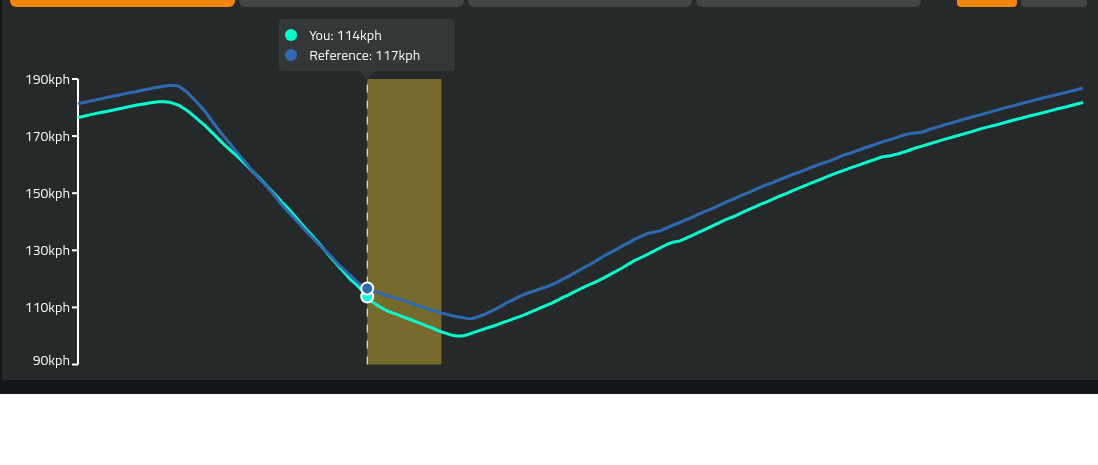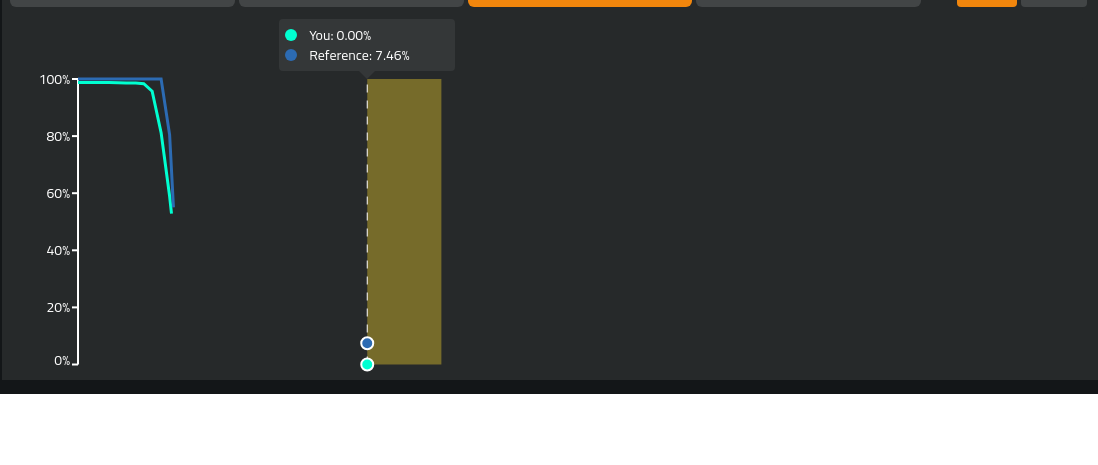Watkins Glen Corner Analysis - Porsche 911 (992) GT3 R (ACC)
February 10th, 2024

The speed chart analysis reveals that driverB is at a disadvantage from the onset, entering the corner with a lower speed than driverA, likely due to not carrying enough speed from the previous corner. This sets them up poorly for the current corner. A key point is where both drivers hit their minimum speed in the corner; driverB's minimum speed is lower and occurs later than driverA's, indicating a delayed throttle application by driverB. This results in a slower exit and less momentum onto the following straight, as evidenced by a less steep increase in speed post-minimum-speed point for driverB compared to driverA. To improve lap times, it's crucial for driverB to apply throttle earlier to maximize exit speed. In terms of throttle control, driverA applies throttle more cautiously and gradually during corner exit, unlike driverB who applies it promptly and with greater intensity. DriverA's cautious approach may stem from uncertainty about grip or car behavior at corner exit, leading to a significant delay in reaching full throttle compared to driverB. For better lap times, driverA should focus on earlier and more decisive throttle application upon exiting corners to enhance their speed onto straights.
Analyzing the speed chart, it's evident that driverB is entering the corner with a speed deficit compared to driverA. This is immediately noticeable at the very start of the chart on the left, where driverB's speed is already lower than that of driverA. This suggests that driverB did not carry as much speed out of the previous corner, which sets them up at a disadvantage before even approaching the current corner. Furthermore, a critical observation is made at the point where both drivers reach their minimum speed in the corner. DriverB's minimum speed is not only lower than that of driverA but also occurs later in time. This indicates that driverB delayed throttle application, resulting in a slower exit and less momentum carried onto the following straight. The gradient of driverB's speed increase post-minimum-speed point is less steep compared to driverA's, confirming a loss of time due to later acceleration. To improve lap times, driverB should focus on earlier throttle application to maximize exit speed from this corner.

In the provided throttle control analysis, there is a distinct difference between driverA and driverB's inputs during corner exit. DriverA's throttle application is delayed and gradual compared to driverB, who applies the throttle more promptly and with greater intensity. This immediate and forceful application by driverB suggests a confident exit from the corner, likely carrying more speed onto the following straight. Furthermore, driverA's gradual increase in throttle indicates a cautious approach, possibly due to uncertainty about grip or the car's behavior at corner exit. This hesitation results in a loss of time as driverA reaches full throttle significantly later than driverB. To improve lap times, driverA should focus on applying the throttle earlier and with more conviction upon exiting corners, ensuring that they maximize their speed onto the straights.
